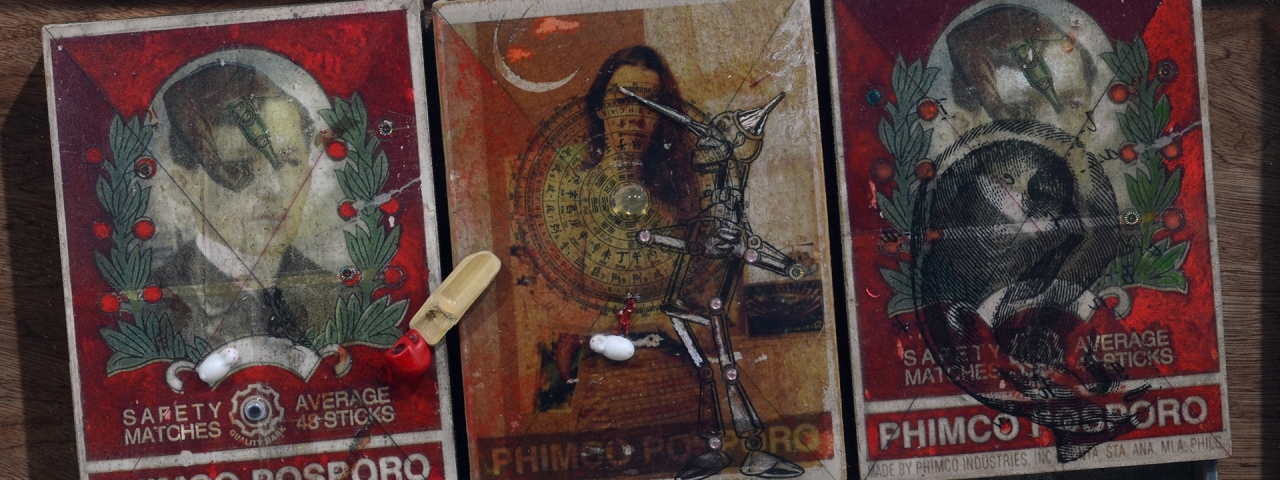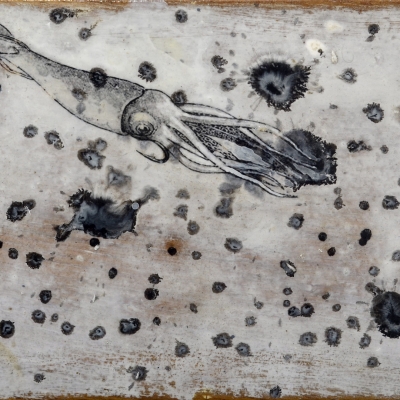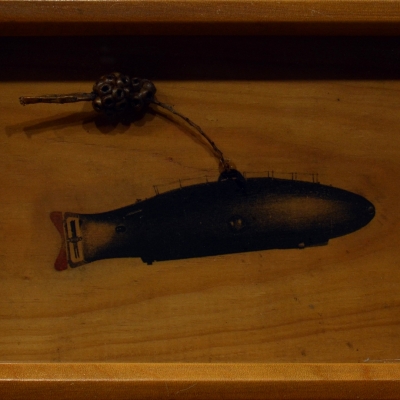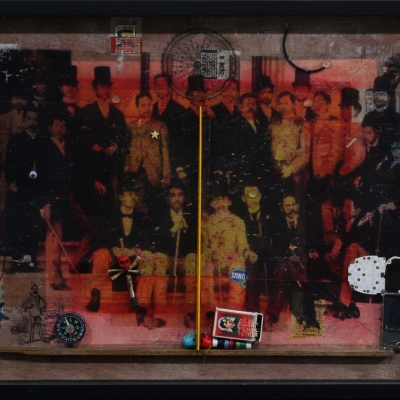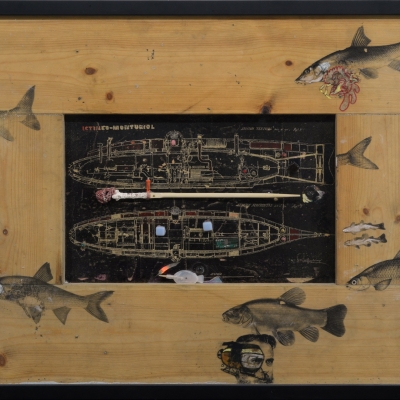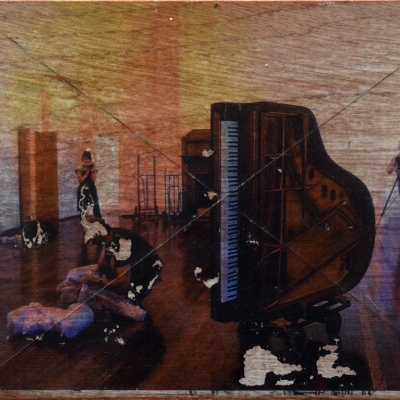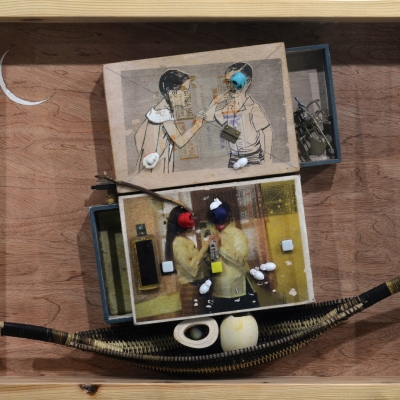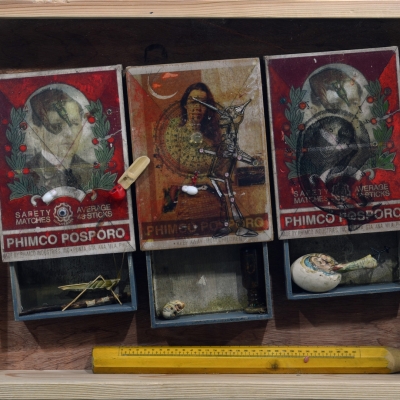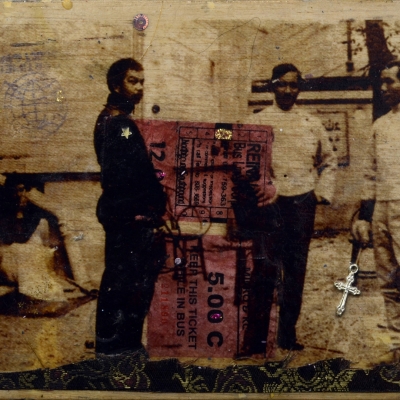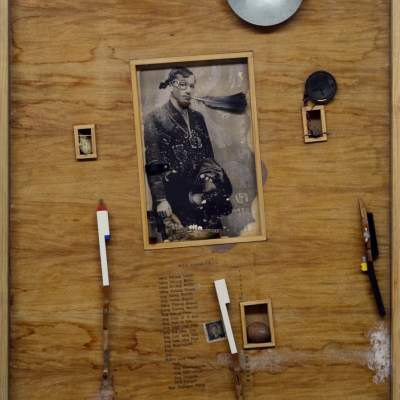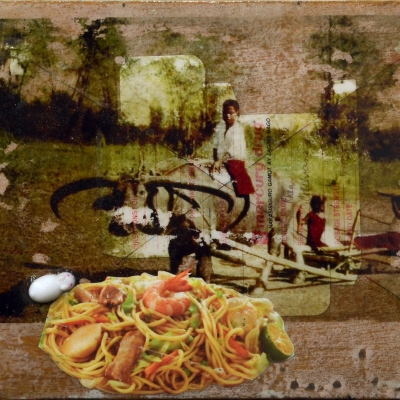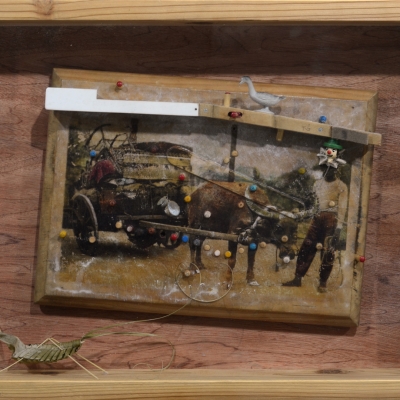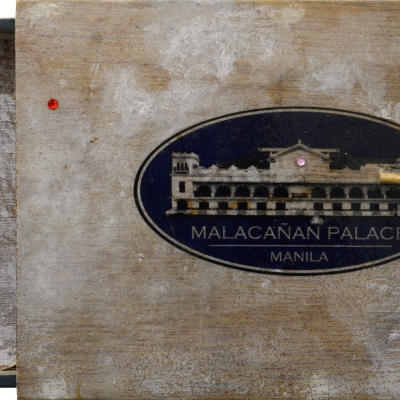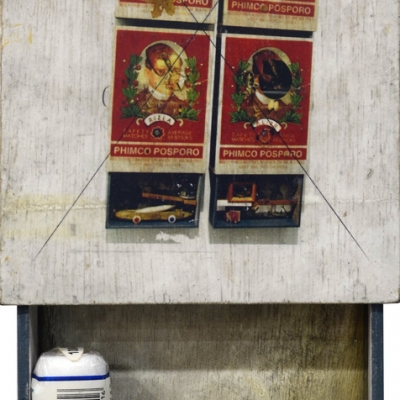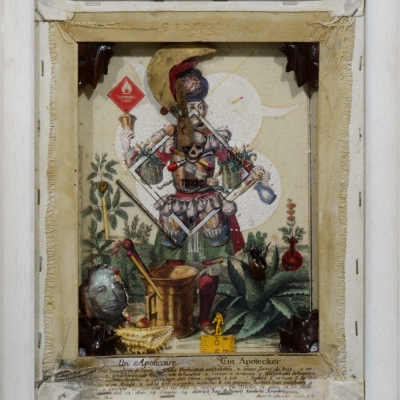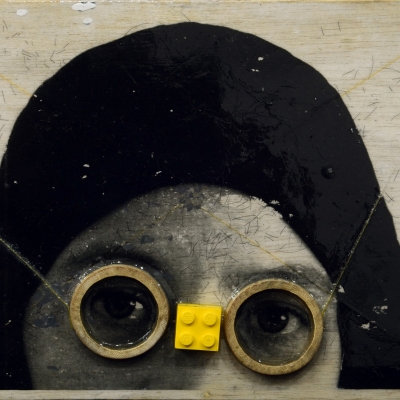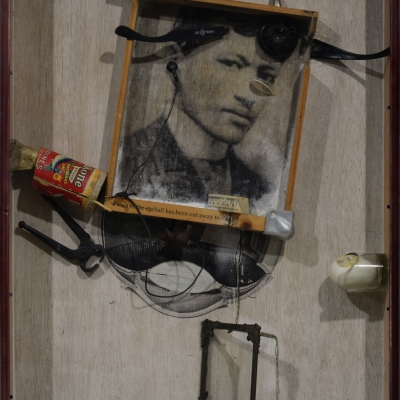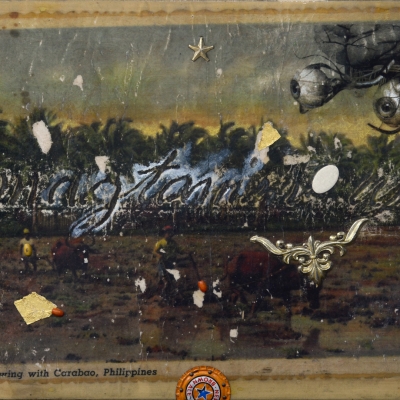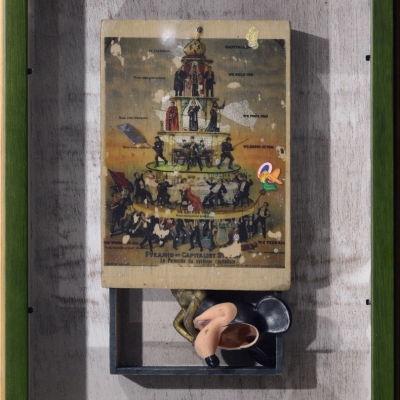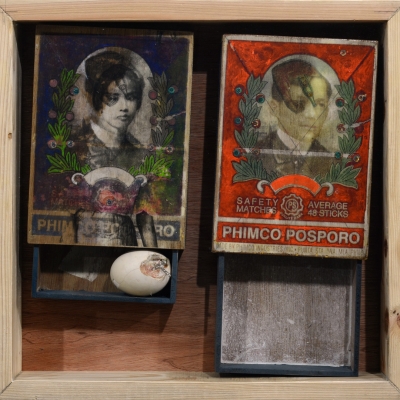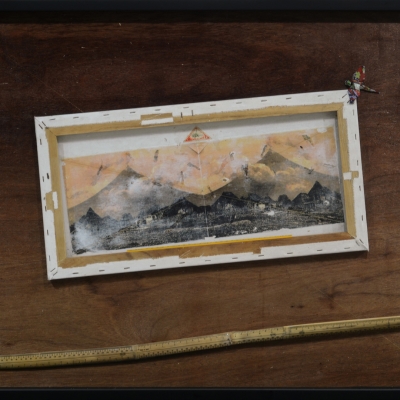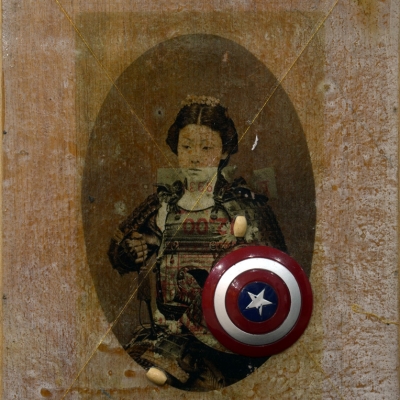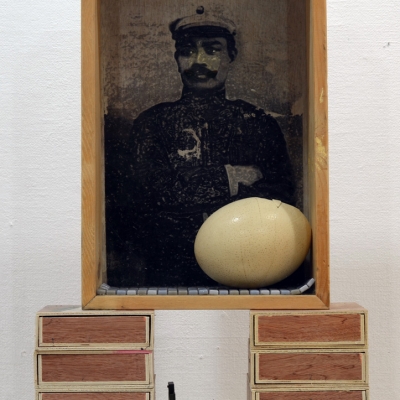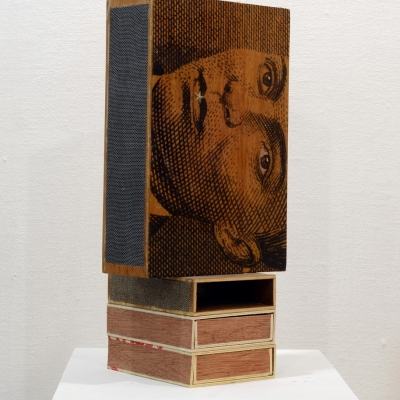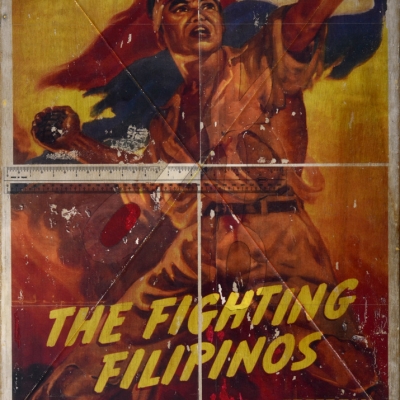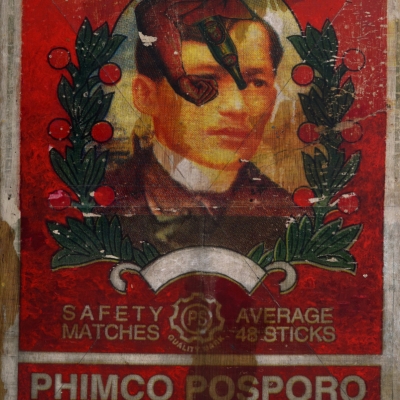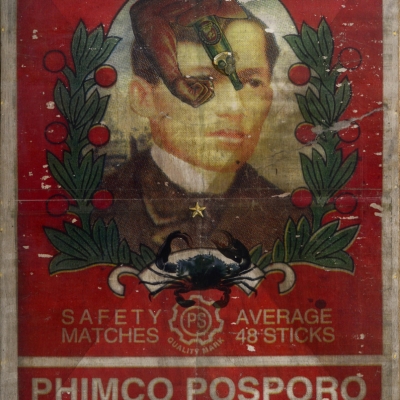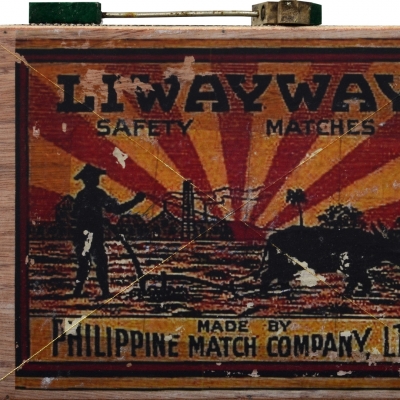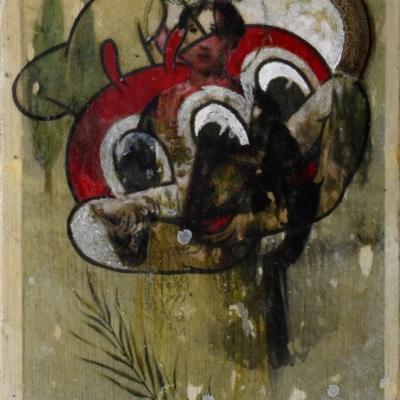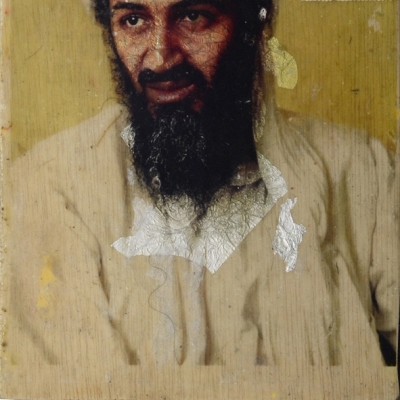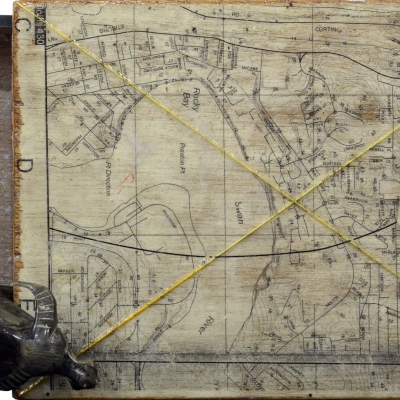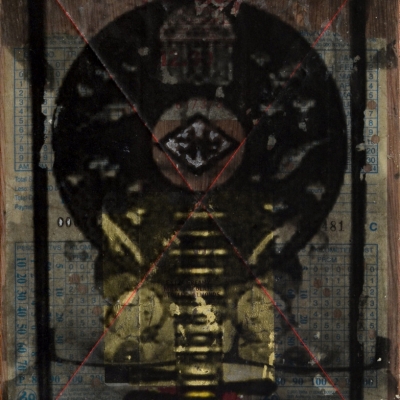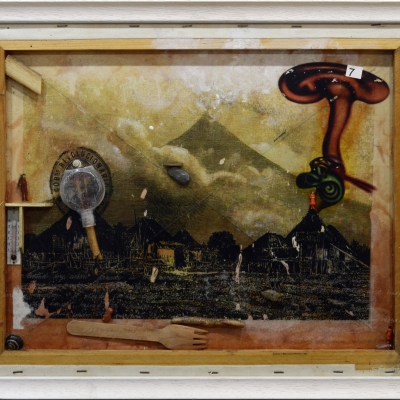Object
Mise en (matched) scene is an ensemble of reworked and recent mixed media pieces, comprising of found and previously used objects: matched, reconfigured and re-animated within a box format, but in a way that exceeds the limits of the box. The format and layout reminds one of an apothecary of herbs and anting-antings or amulets which in traditional Filipino worldview function as aids to rituals performed by the albularyo, the Filipino healer. Aimed at smoothing blocked energy flows (bara), aligning mis-aligned energy channels (pilay), balancing imbalances in musculature (pasma), flushing out toxins and expelling wind and cold (hilo, hangin, lamig), the albularyo mobilizes a range of methods – from bulong (whispers), to “hilot” (“massage”), to incantations (dasal), to prescribing herbs.
Alwin Reamillo’s artistic vocabulary partakes of the itinerant albularyo’s methods, aiming to “doctor” or “mend the broken relationship between image and meaning” through a process he calls “skin grafting/rebuilding/
These doctored and grafted fragments – in their constructed and found places of display ( wooden suitcases, giant matchboxes, miniature retablos/ altars, boxed frames, chinese scroll paintings ) – collide and mingle in dynamic, unstable and bizarre combinations, conjured intuitively and playfully. Rather than a polished product, the artist’s mis-en-scene of animated, mis/matched and matchboxed objects is constantly on the move, unfinished, multi-layered, always on the verge of the next experimental step and continuously passing over a threshold rather than arriving on an exact and definite destination, resisting integration into a coherent narrative. Forgotten, overlooked, presumed dead and of little value, the objects come alive through an alchemical process that ignites and transforms them into potent substances with renewed value and meaning. In breathing life into objects and infusing them with spirits through mending, suturing, re-constructive layerings -akin to the albularyo’s hilot, bulong, and dasal – the object ceases to be a noun, a product, a collector’s item, as Jeannette Winterson wrote. It is an active verb, an agent of change and hope. In a world haunted by illness, the object objects.-

